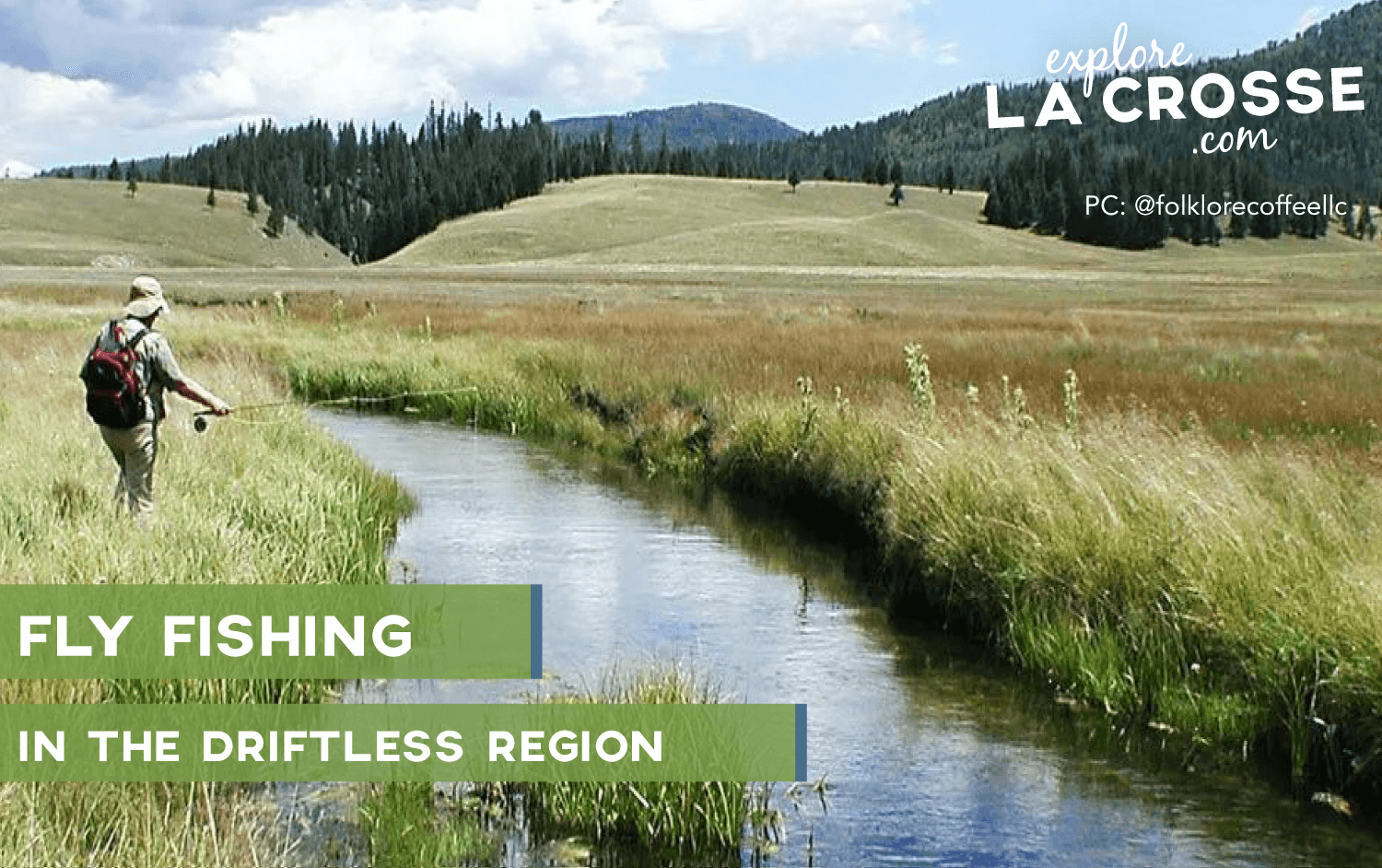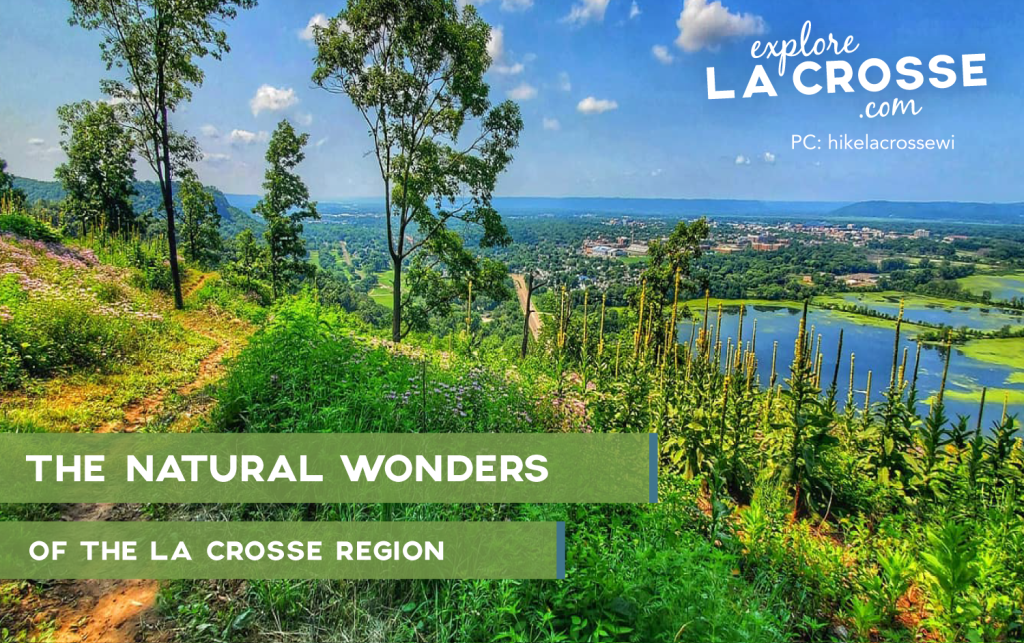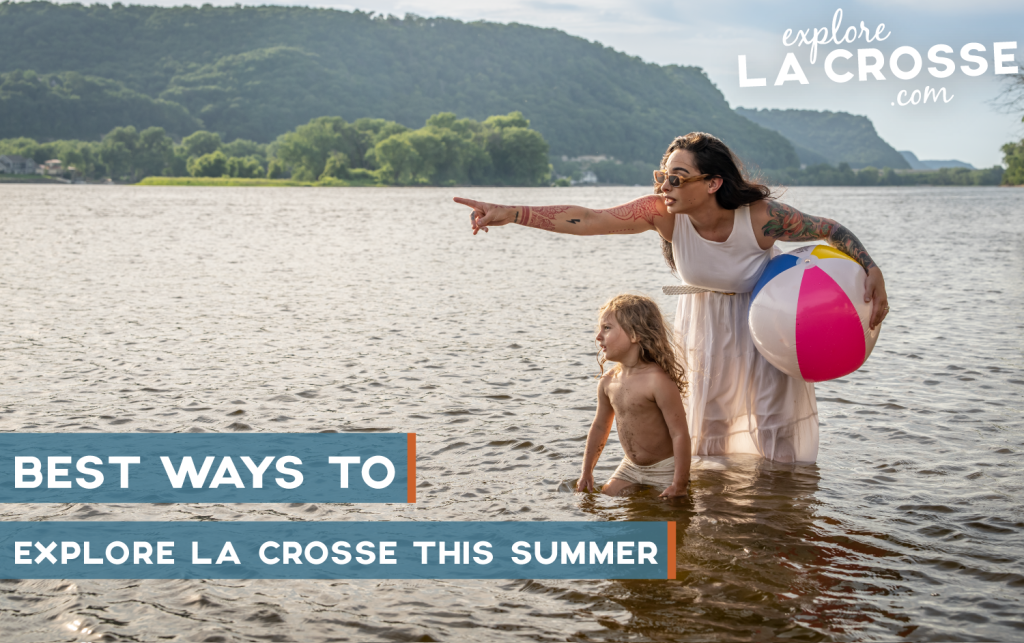Written By The Wading List
Cold groundwater passes over limestone and boils from deep within the earth’s crust until it pushes to the surface and starts rolling toward the Mississippi.
At the edge of the prairies of the American Midwest, the Driftless area flourishes. With people, farms, beer, cheese, industry and history. And at the bottom of it all, with clean spring creeks and trout. Lots and lots of trout.
“Fishing, like fish, and like much in the natural world, flourishes at the edge of things.”
Ted Leeson, Jerusalem Creek
Driftless Area: Formed by the Ice Age
12,000 years ago seems like a really long time. In the context of our life on this planet it might be. However, in the context of the 2.5 Million years that the glaciers of the last Ice Age carved, rutted, gutted and ground down most of Canada and the Northern United States into one flat prairie dotted with lakes, it is not. During that 2.5 million years, as the ice advanced and retreated over the midwest like massive continent-sized waves of an ocean, it left behind its “drift” – clay, silt, sand, rocks, boulders.
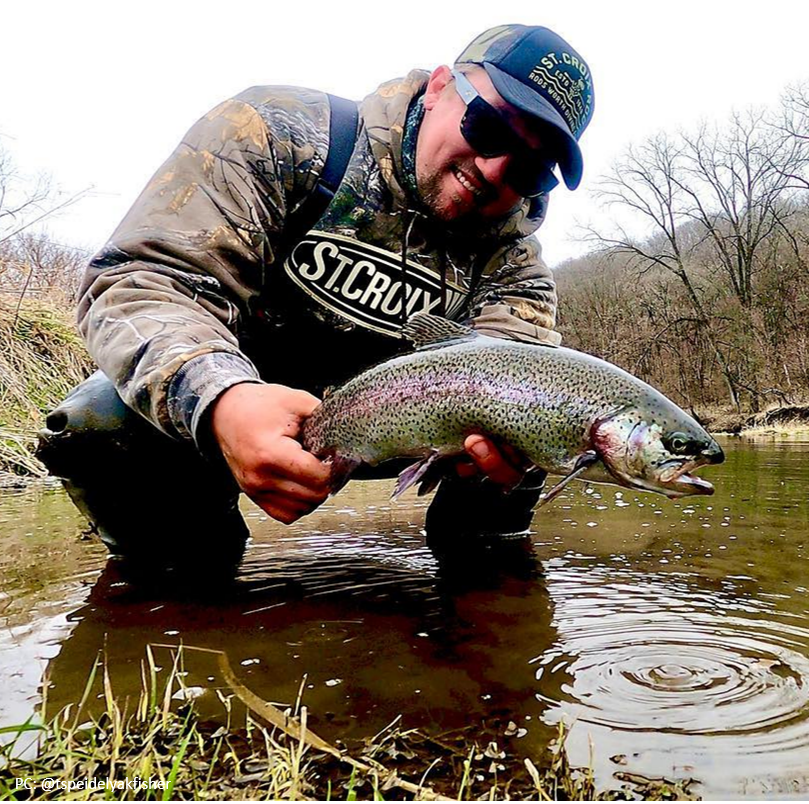
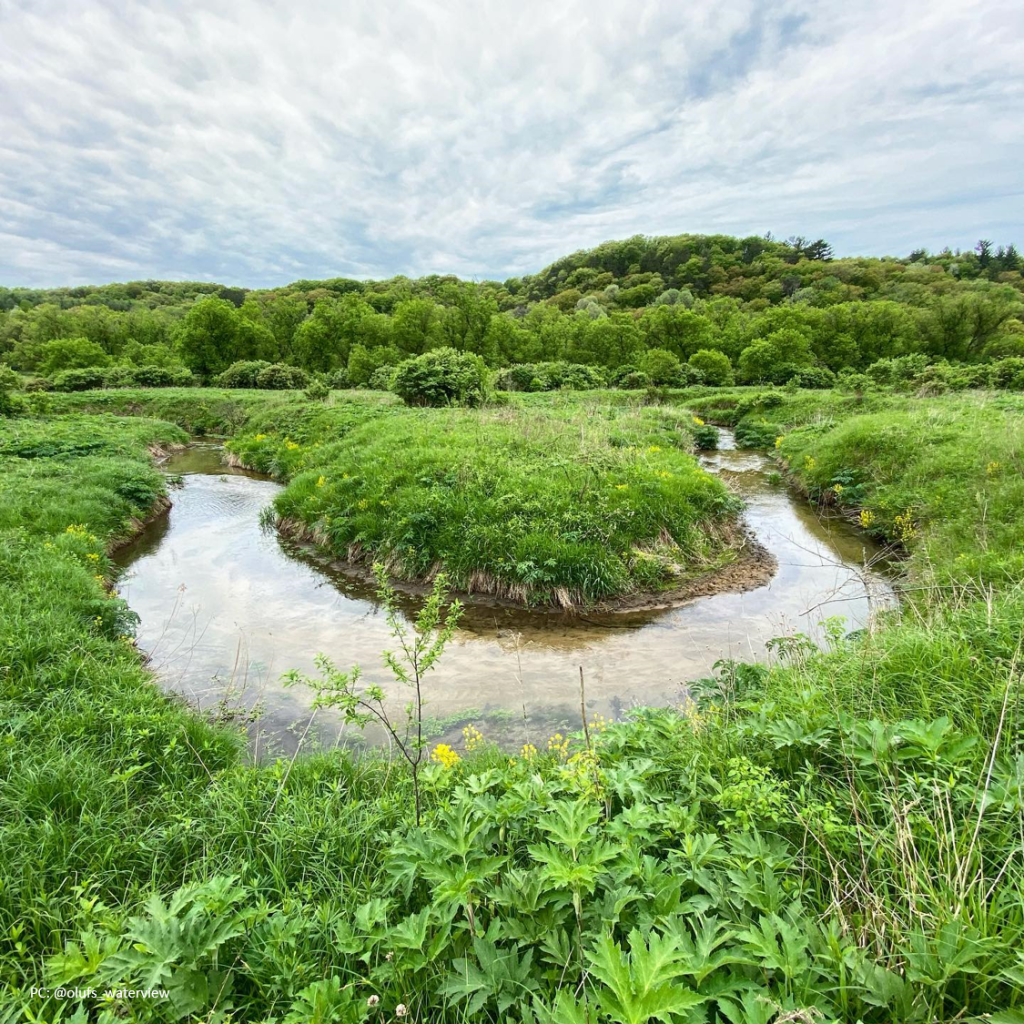
Except for one area in the Midwest. 24,000 square miles in Minnesota, Wisconsin, Iowa, and Illinois left unscarred. The drift stopped just short, forming the edge of the area we now know as Coulee Country. Little Norway. The Paleozoic Plateau. Or by it’s more recognized name, The Driftless. The edges start to blur. The prairies melt away here, and the imprint of mother nature’s hands start to come into focus – bluffs, nooks, hollows, ridges, savannahs, brooks, cricks, white pines, and the soft corners of grassy undercut creek banks.
A lot has happened in 12,000 years. The ice started to retreat for good, and that melting ice conveniently coincided with the migration of the first human beings in America, as vast and varied as the ecology of the area: Native peoples – Mound Builders, The Ho-Chunk, Chippewa, Kickapoo, Norweigan settlers, German brewers and cheese makers, Polish sausage makers, Bohemian textile artists, Czech refugees, counter-cultural hippies, conservationist authors, plains architects, british homesteaders, amish carpenters, hmong organic farmers, and french fur traders. And eventually, the trout bum.
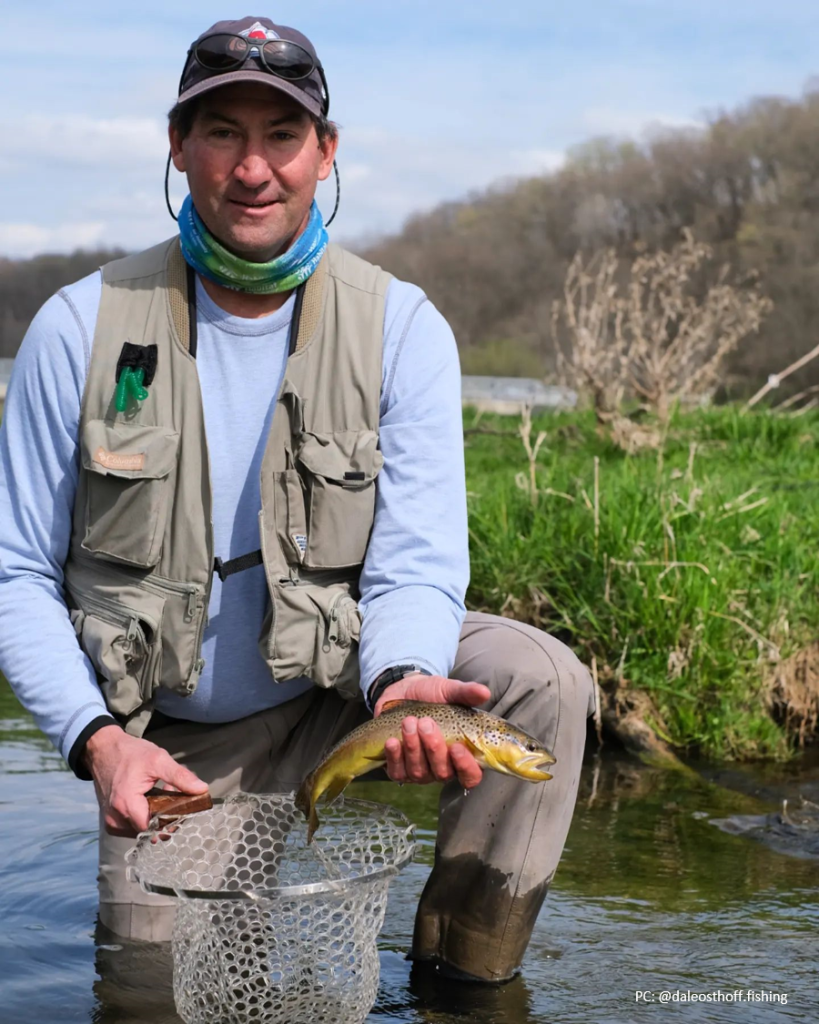
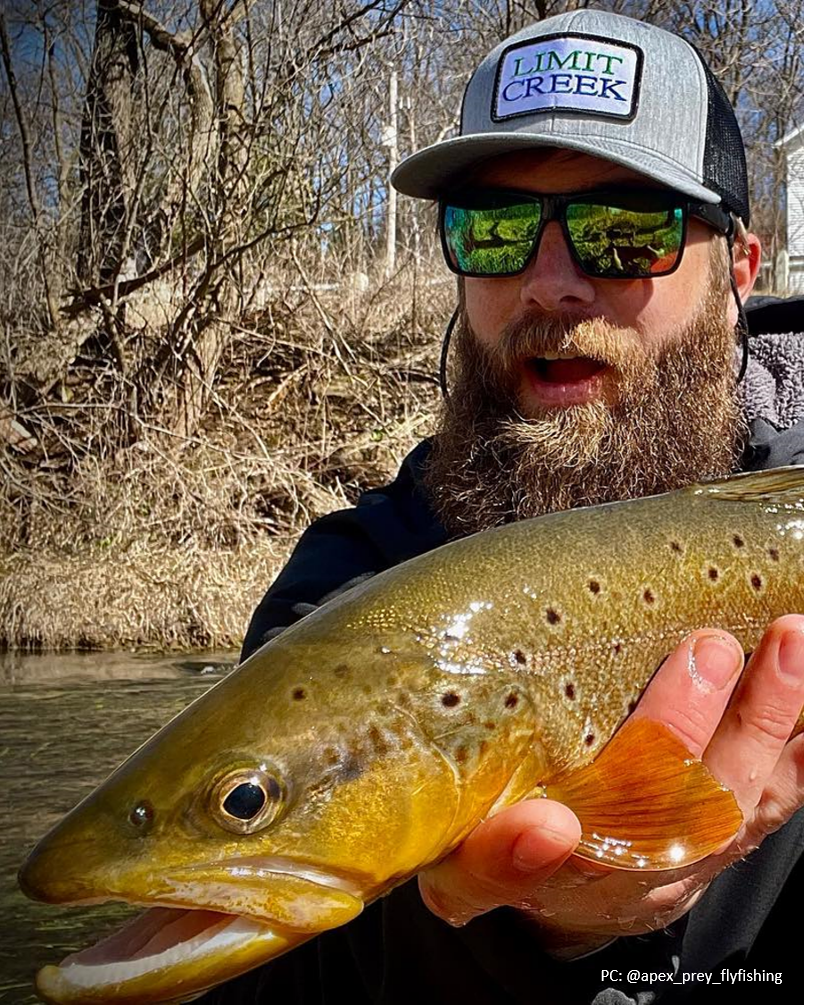
Fly Fishing Driftless Area, Wisconsin: Trout Everywhere
The sun is peeking above the bluffs as I light the Jetboil for my morning coffee on the tailgate of the rig. Most times I reach for a big bushy caddis without really thinking too much about it while the water for coffee boils. Of the 13,000 miles of trout streams, rivulets, cold springs, rivers, and trickles, we’re usually looking for the trickles. Little streams you can almost step over.
Every piece of water here feels connected to the other, therefore large trout often find their way into some very small water. Small ones are in there too, and we seem to touch a bunch more of those as the sun rises and warms our cheeks and the beer can in my back pocket. Crushed mint under foot floats up through the air as tiny midges pop and flit. Pop, flit, mint. Pop, flit, mint. This sets the cadence for the day.
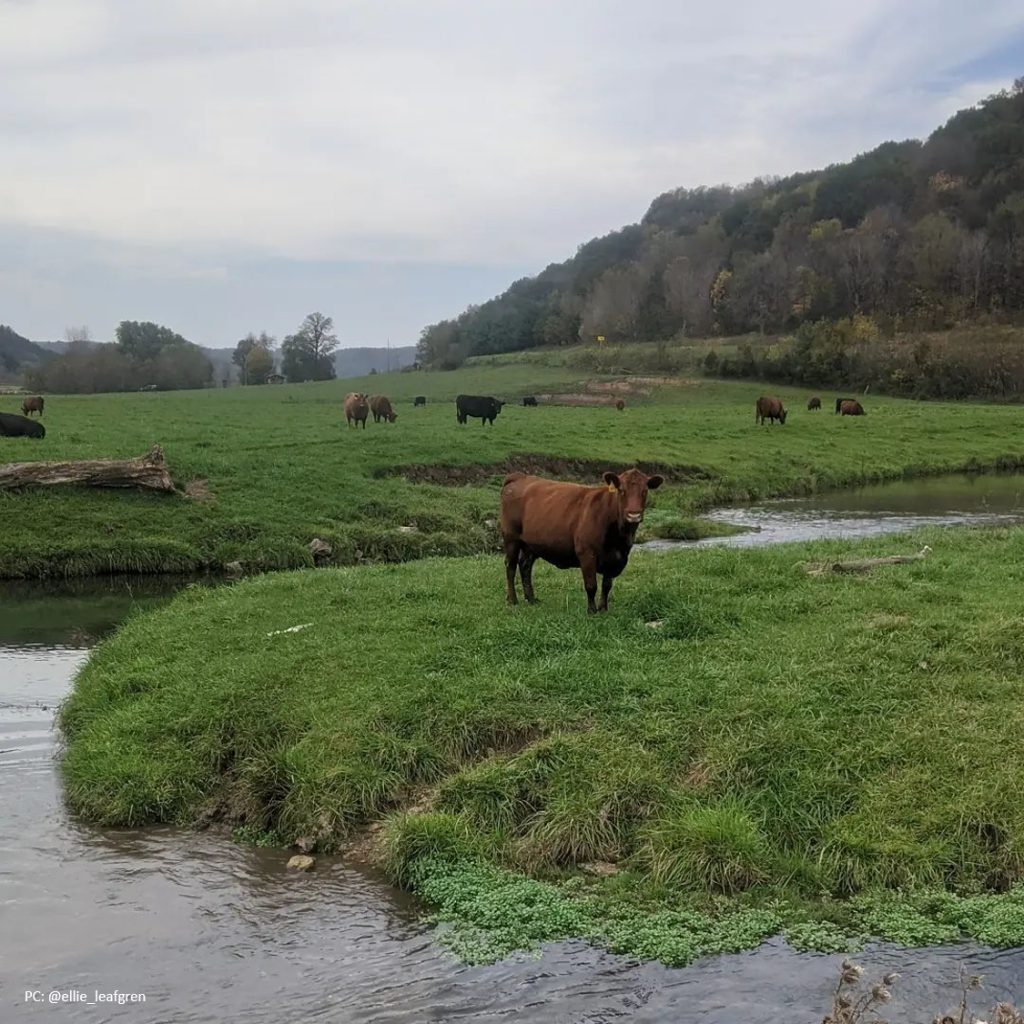
If you’re a match-the-hatch kind of angler, every season in the driftless offers something for you, even in the middle of the winter. I’m not into knocking ice off my guides and fingerless gloves, so I skip it altogether and wait for spring, then pause to get fired up for late summer and early fall.
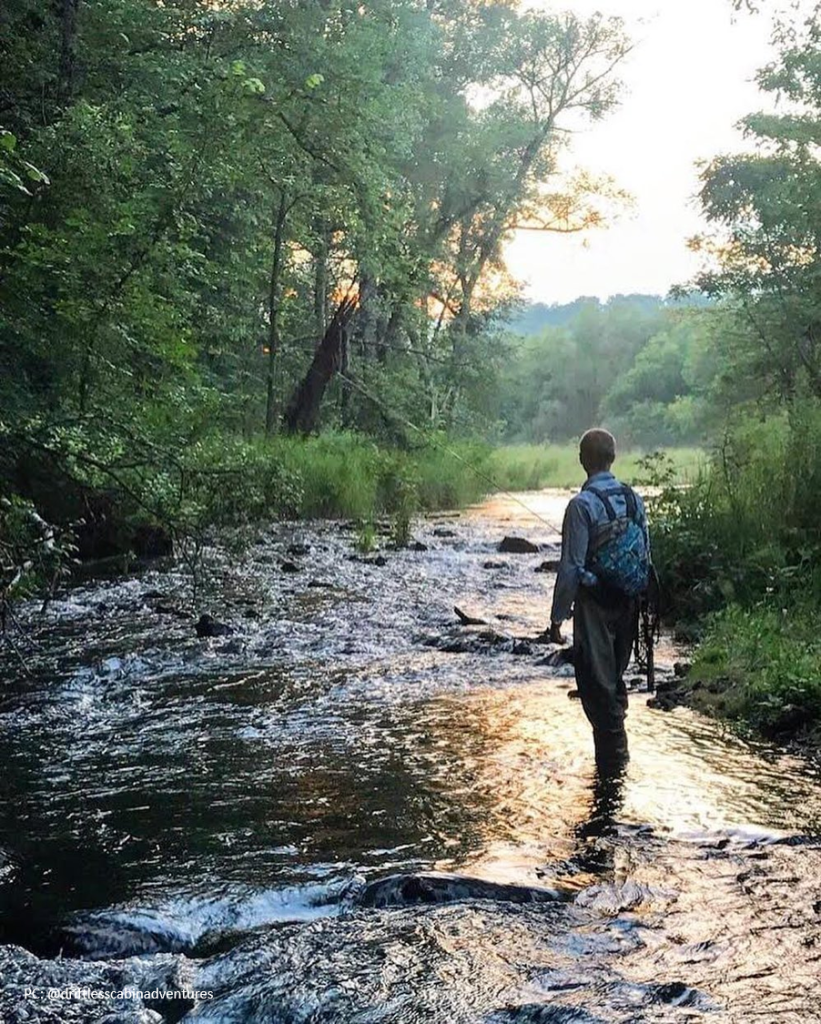
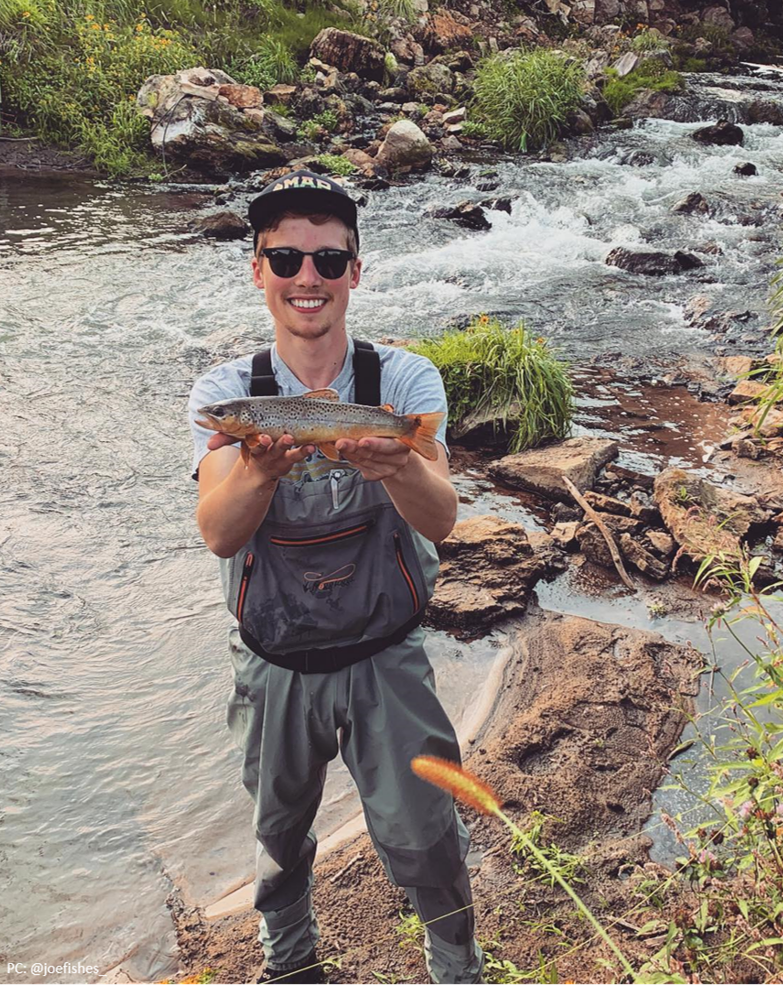
In the early spring the stream-side grasses and vegetation are lower, fish are hungry, tiny black stoneflies and midges pop up before a smattering of blue-winged olive hatches. Caddis follow, and you can expect pretty great fishing with a dry fly tight to the bank. You can also have a helluva day pitching little heavy buggers and streamers against a limestone wall or ripping them through riffles and brush piles.
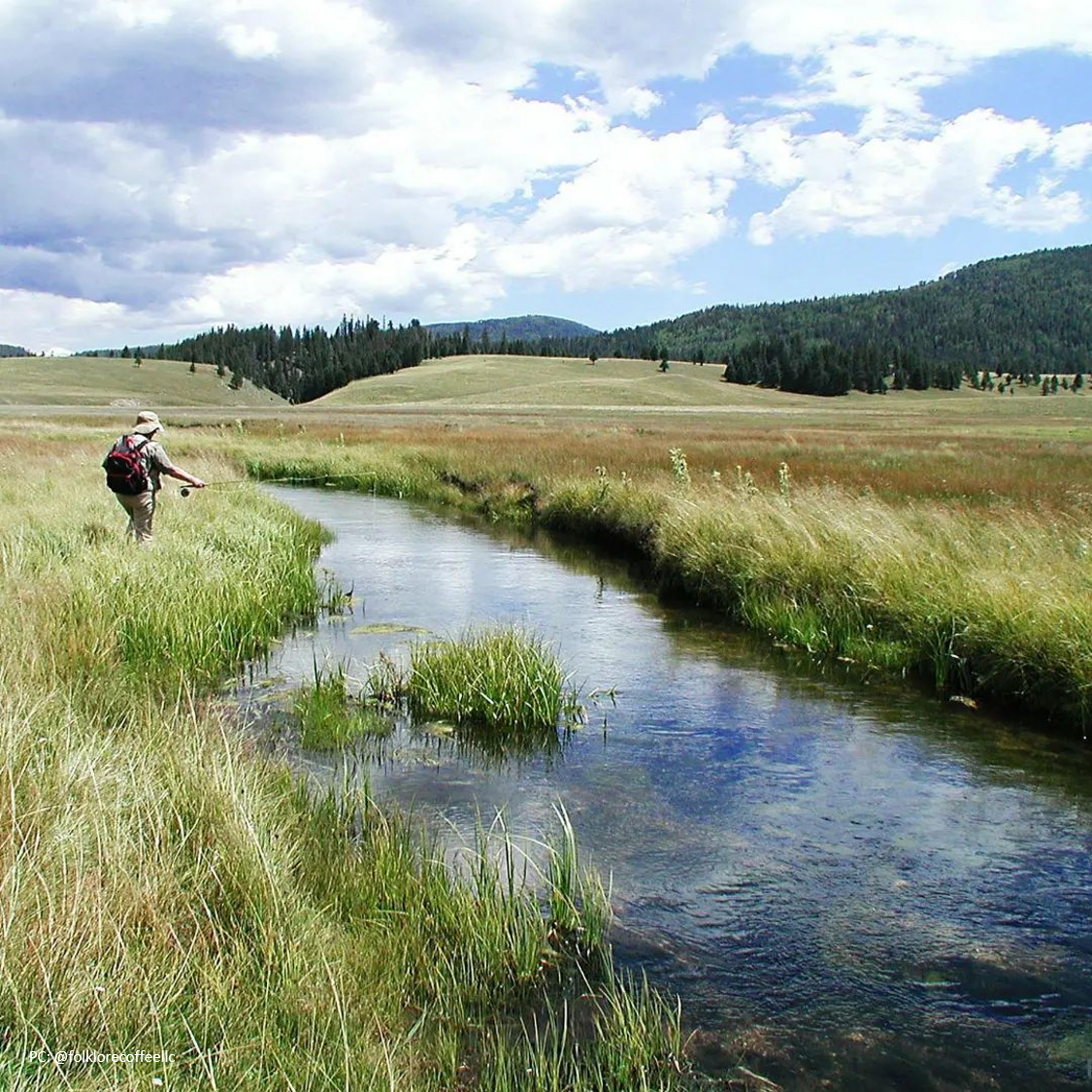
Driftless Area: the Big Boys come out at night
Late summer brings on big terrestrial fishing and slides up next to impressive trico hatches. And of course, if you have the patience and fortitude, dragging big mice patterns in the middle of the night with a headlamp can lead to a shot at a very large night-feedin’ vampire, brown trout.
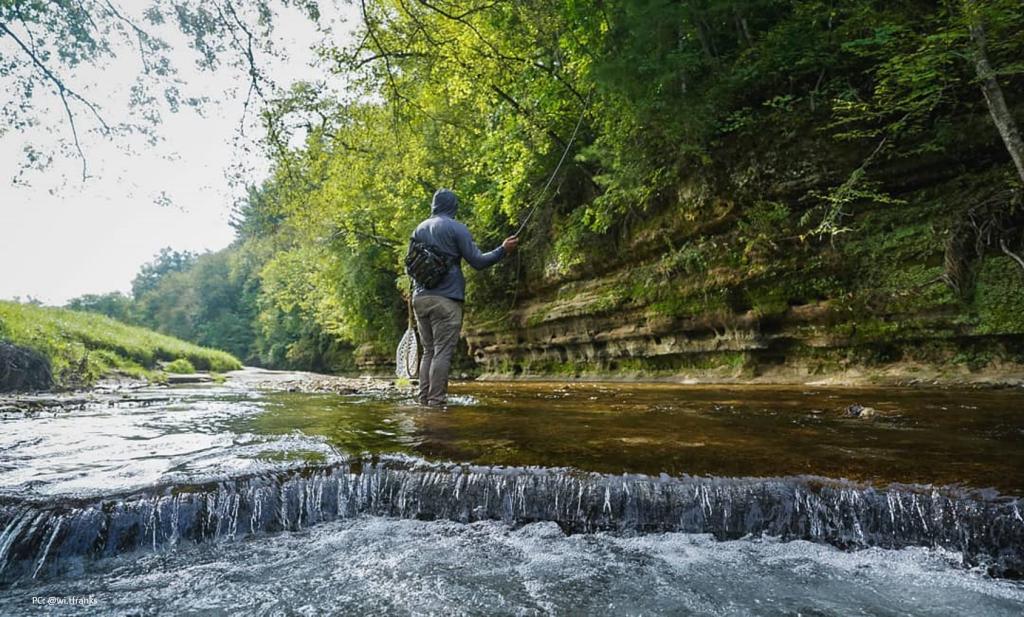
I toss a few beers in the cooler and a couple cold breakfast burritos. There are small cabins for rent scattered throughout the area, but if you don’t mind sleeping on the ground, there are endless car-camping spots dotting the five million acres of public land.
The Toyota sputters out of the campground, kicking up rocks from the dirt road, slapping the fender, passing dairy and pig farms and supper clubs and click-clack horse buggies and old tobacco barns and high above the bluffs edge a Cooper’s Hawk circles.
I don’t even know where I’m going, and I think that’s the right attitude to have. I’m not on my way to fish the Frying Pan or the Bighorn.
Fly Fishing Wisconsin: Fish the Area not the River!
In fact, you don’t really come here to fish one river. You’re here to fish the area. You will find water. And that water will have trout in it. Sometimes really big ones. Sometimes really small ones. Brown ones. Brook ones. Tiger ones. Pick a hollow and head up that hollow. Stick your head out the window to take in the sweet honeysuckle, the warm watercress, the wet clay. You’ll find the water.
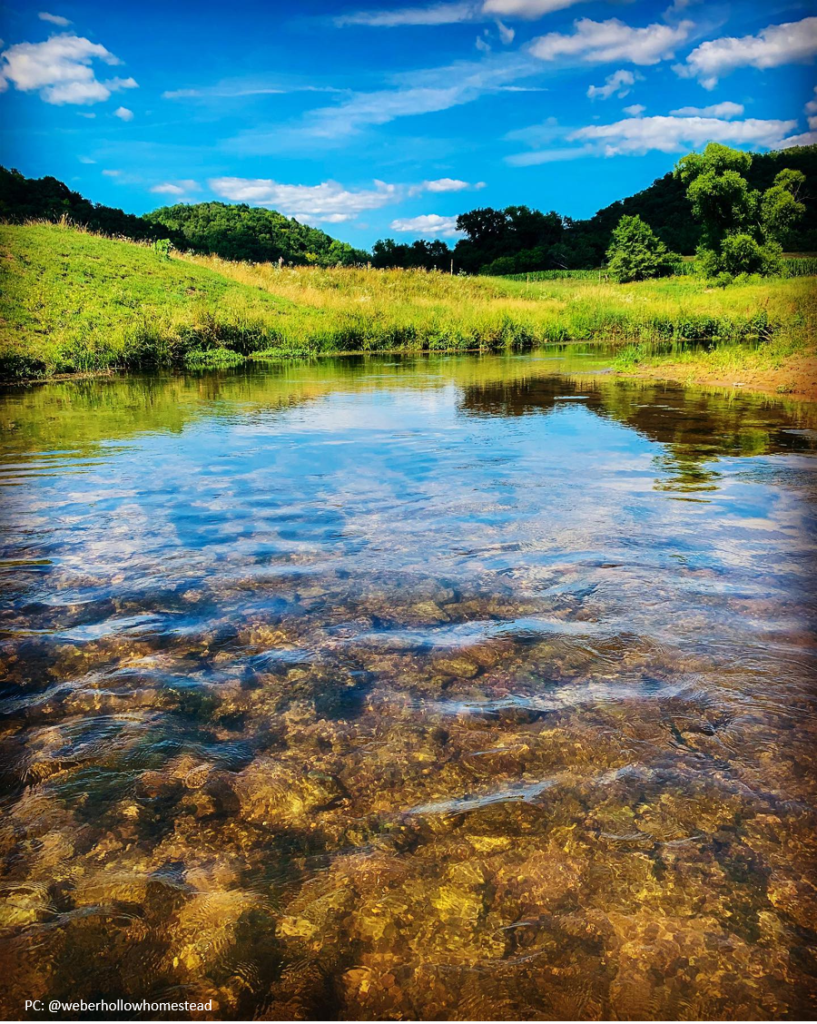
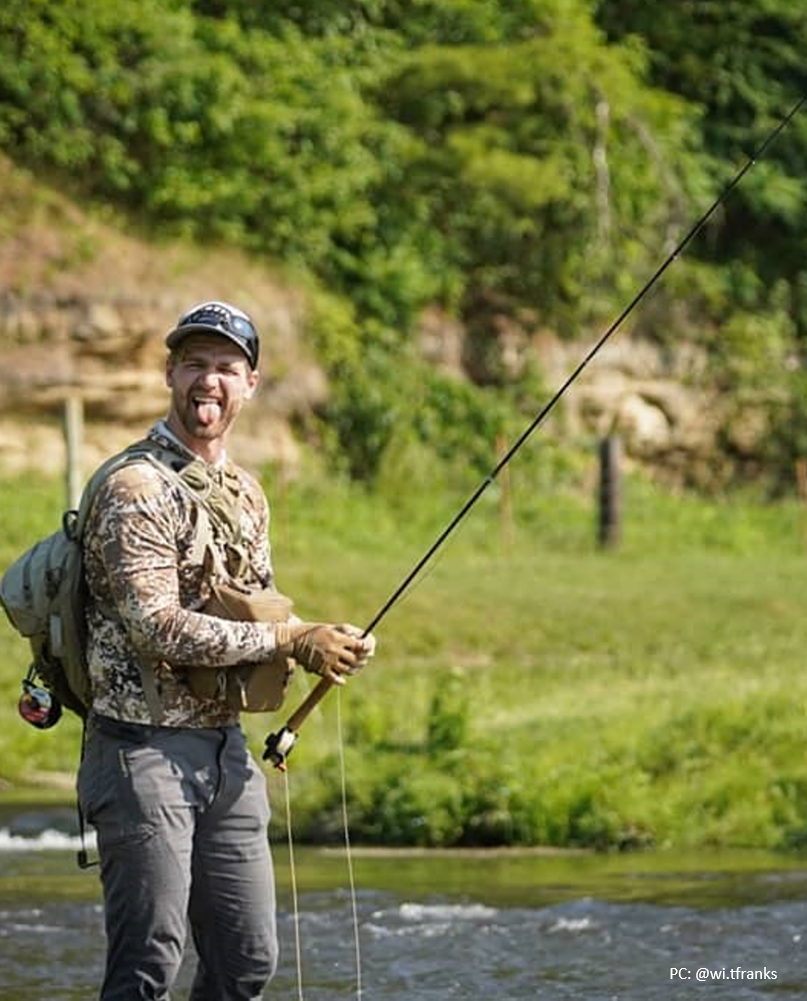
My caddis slams clumsily against the grass on the far bank, the sun is setting. The furry size 14 bounces off the grass and drops two inches from the edge of the undercut bank. A soft warm breeze pushes upriver through the valley, carrying wild rose and parsnip and midges over the top of my hat, over the creek’s silver surface, and pushes the bug into a slick and it spins in place. A Cooper’s Hawk yelps as her circle tightens, and the caddis floats quietly along the edge.

The edge of cultural and ecological divides, of human civilization and of animal evolution. The edge of nature’s raw, unrelenting and determined control over all of it. A deep slow shadow moves from the bank and inspects my caddis, before quietly, softly, slipping back into the eternal dark outside edge of the bend. I smile and sit down to open my beer and watch. We both flourish in the Driftless.
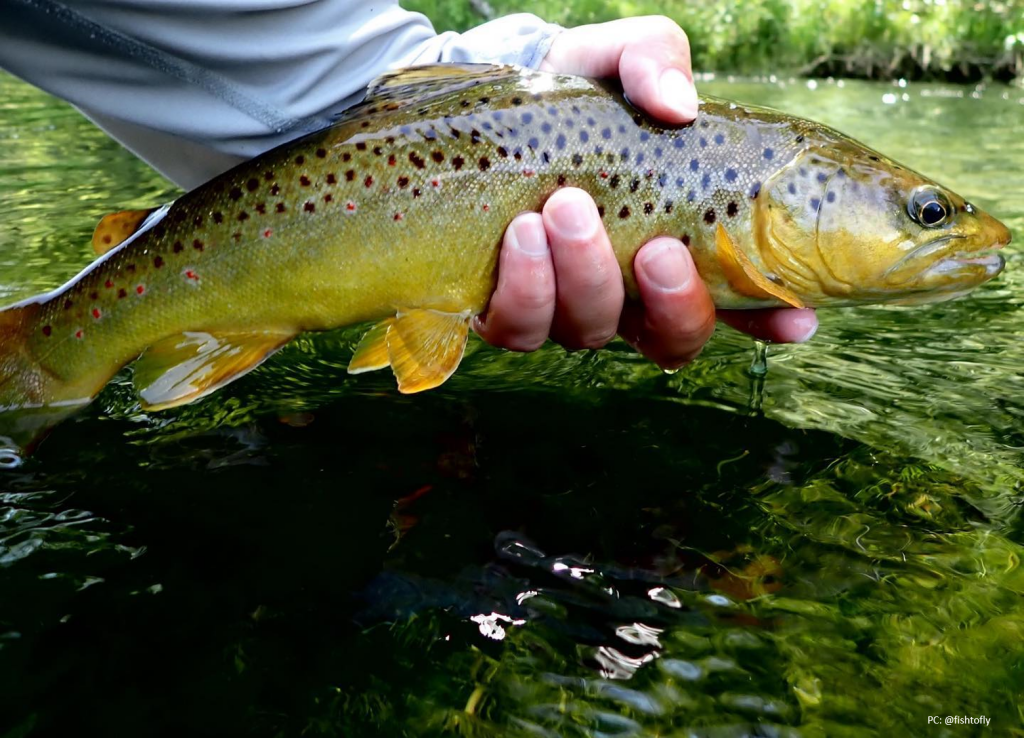
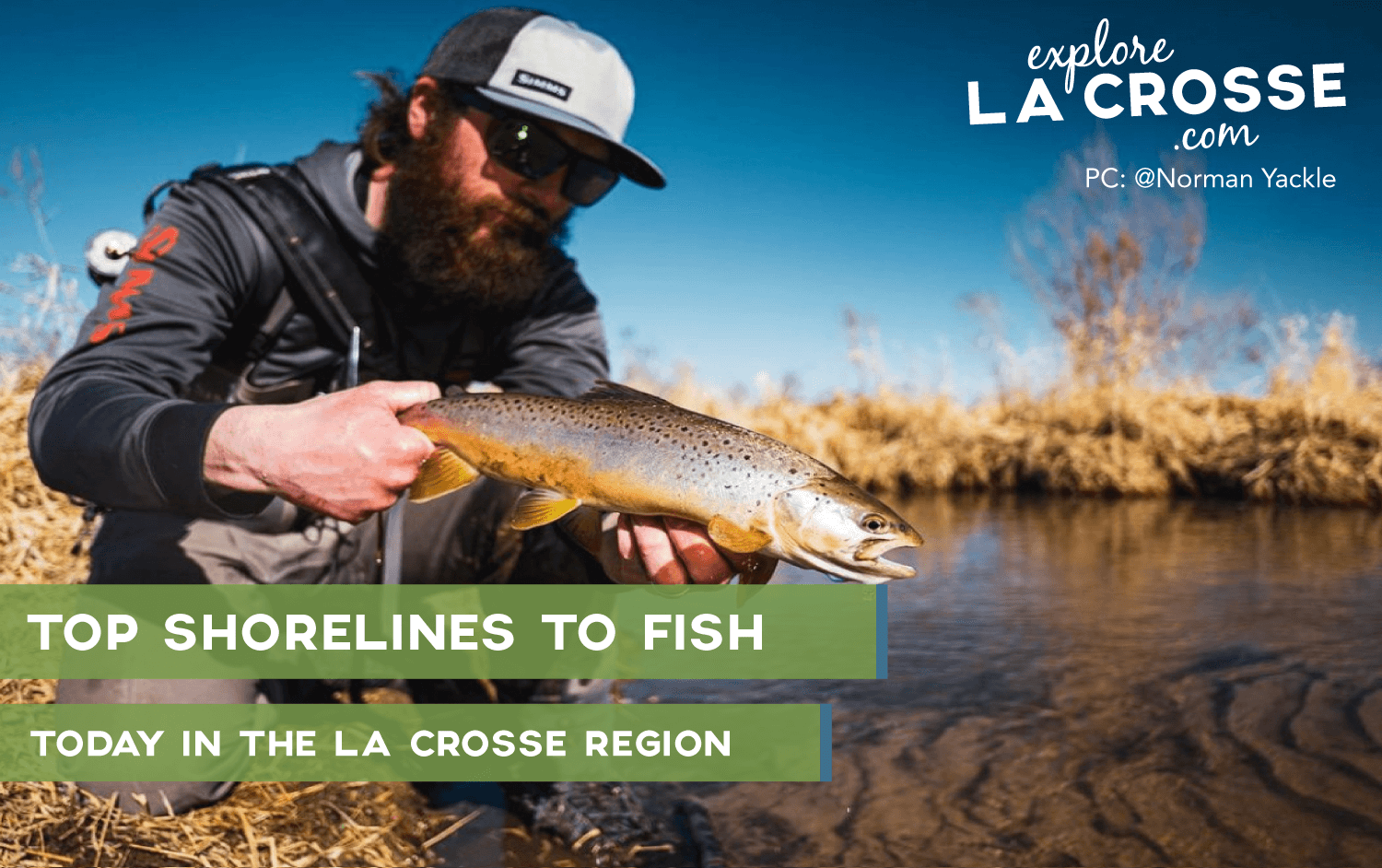
Top Shorelines To Fish
Numerous creeks, streams, and other rivers flow into the Mississippi River that also make for excellent opportunities to reel in dinner. No boat? No problem!
The area has amazing options to fish from shorelines, docks, piers, floats, and more without ever having to step foot on the water.
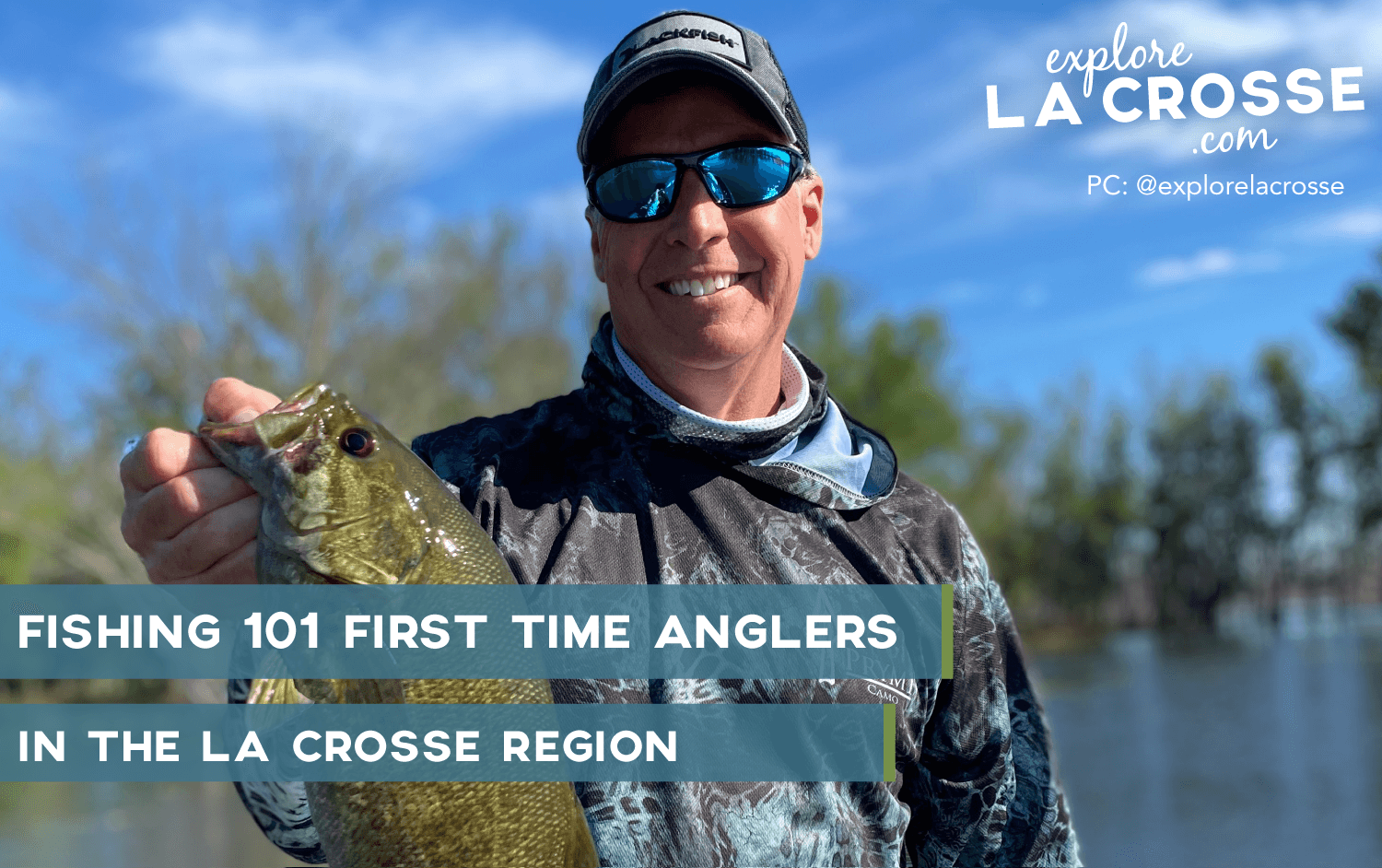
Fishing 101- First Time Anglers
La Crosse is home to excellent fishing opportunities! There’s also a variety of boat launches, beaches for surf fishing, and marinas. We’ve put together a guide for anglers arriving in La Crosse to fish these waters. You’ll find all you need to know in this guide: Fishing 101 for first-time
anglers in La Crosse.
